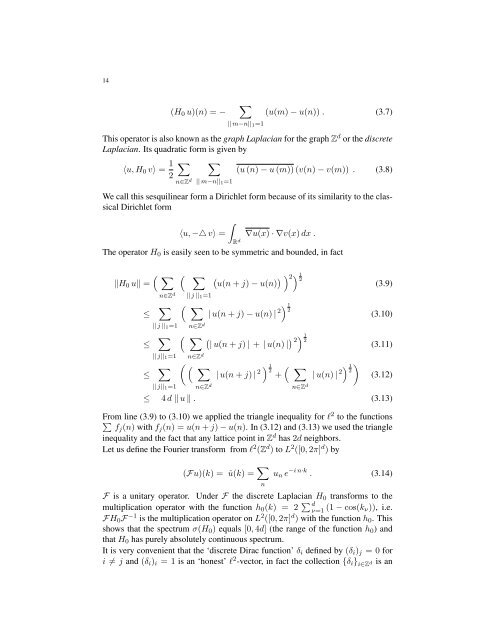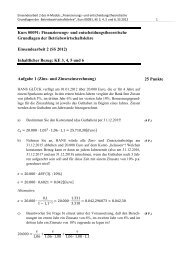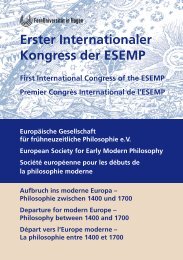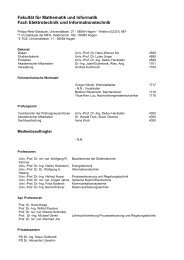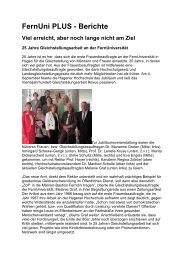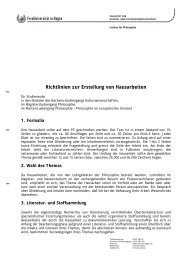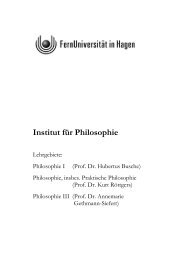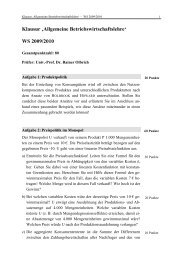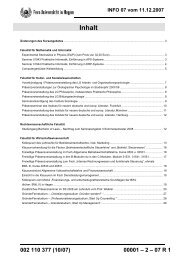An Invitation to Random Schr¨odinger operators - FernUniversität in ...
An Invitation to Random Schr¨odinger operators - FernUniversität in ...
An Invitation to Random Schr¨odinger operators - FernUniversität in ...
Create successful ePaper yourself
Turn your PDF publications into a flip-book with our unique Google optimized e-Paper software.
14<br />
(H 0 u)(n) = − ∑<br />
|| m−n|| 1 =1<br />
(u(m) − u(n)) . (3.7)<br />
This opera<strong>to</strong>r is also known as the graph Laplacian for the graph Z d or the discrete<br />
Laplacian. Its quadratic form is given by<br />
〈u, H 0 v〉 = 1 ∑ ∑<br />
(u (n) − u (m)) (v(n) − v(m)) . (3.8)<br />
2<br />
n∈Z d<br />
|| m−n|| 1 =1<br />
We call this sesquil<strong>in</strong>ear form a Dirichlet form because of its similarity <strong>to</strong> the classical<br />
Dirichlet form<br />
∫<br />
〈u, −△ v〉 = ∇u(x) · ∇v(x) dx .<br />
R d<br />
The opera<strong>to</strong>r H 0 is easily seen <strong>to</strong> be symmetric and bounded, <strong>in</strong> fact<br />
( ∑ ( ∑<br />
‖H 0 u‖ =<br />
n∈Z d<br />
|| j || 1 =1<br />
(<br />
u(n + j) − u(n)<br />
) ) 2) 1<br />
2<br />
(3.9)<br />
≤<br />
∑ ( ∑<br />
| u(n + j) − u(n) | 2) 1 2<br />
(3.10)<br />
|| j || 1 =1 n∈Z d<br />
≤<br />
∑ ( ∑ ( ) ) 1<br />
2 2<br />
| u(n + j) | + | u(n) | (3.11)<br />
|| j|| 1 =1 n∈Z d<br />
≤<br />
∑ ( ( ∑<br />
) 1 ( ∑<br />
| u(n + j) | 2 2<br />
+ | u(n) | 2) )<br />
1<br />
2<br />
(3.12)<br />
|| j|| 1 =1 n∈Z d n∈Z d<br />
≤ 4 d ‖ u ‖ . (3.13)<br />
From l<strong>in</strong>e (3.9) <strong>to</strong> (3.10) we applied the triangle <strong>in</strong>equality for l 2 <strong>to</strong> the functions<br />
∑<br />
fj (n) with f j (n) = u(n + j) − u(n). In (3.12) and (3.13) we used the triangle<br />
<strong>in</strong>equality and the fact that any lattice po<strong>in</strong>t <strong>in</strong> Z d has 2d neighbors.<br />
Let us def<strong>in</strong>e the Fourier transform from l 2 (Z d ) <strong>to</strong> L 2 ([0, 2π] d ) by<br />
(Fu)(k) = û(k) = ∑ n<br />
u n e −i n·k . (3.14)<br />
F is a unitary opera<strong>to</strong>r. Under F the discrete Laplacian H 0 transforms <strong>to</strong> the<br />
multiplication opera<strong>to</strong>r with the function h 0 (k) = 2 ∑ d<br />
ν=1 (1 − cos(k ν)), i.e.<br />
FH 0 F −1 is the multiplication opera<strong>to</strong>r on L 2 ([0, 2π] d ) with the function h 0 . This<br />
shows that the spectrum σ(H 0 ) equals [0, 4d] (the range of the function h 0 ) and<br />
that H 0 has purely absolutely cont<strong>in</strong>uous spectrum.<br />
It is very convenient that the ‘discrete Dirac function’ δ i def<strong>in</strong>ed by (δ i ) j = 0 for<br />
i ≠ j and (δ i ) i = 1 is an ‘honest’ l 2 -vec<strong>to</strong>r, <strong>in</strong> fact the collection {δ i } i∈Z d is an


